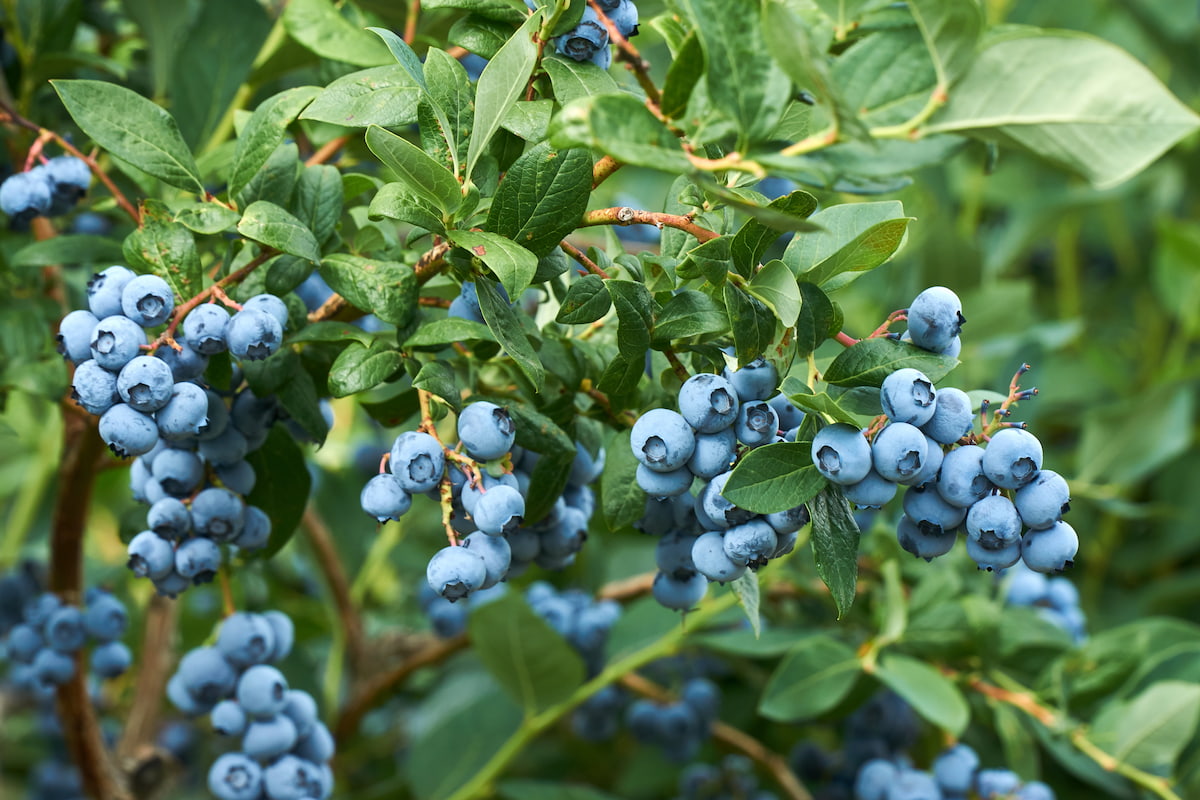

The blueberry has become an extremely popular crop all over the world in recent years due to its organoleptic and healthy properties, gaining followers through its return on investment. The huge market interest in this fruit has made it a cutting edge crop in terms of technology and genetic alterations.
The challenges of growing blueberries stem from the demands of the crop, its high sensitivity to water stress, low tolerance to salinity and desired soil acidity levels. The initial investment will depend on the type of cultivation to be established (soil or hydroponic cultivation) and the most important variable is harvesting, as most varieties have to be harvested by hand.
The blueberry is a natural crop of North America, preferring cold climates, and certain varieties may require up to 1,200 chill hours. Breakthroughs in genetics have led to the development of varieties that adapt to milder conditions, with an earlier entry into production (ready for harvesting in 1 to 3 years), from May onwards in the northern hemisphere, which can be staggered with good management until November.
The most popular varieties always depend on market demand in each case, and we should bear in mind that the Canadian market is more oriented towards wilder varieties, with lower production, but with extraordinary flavour for baking. On the other hand, the European market prefers fresh fruit.
The varieties most in demand on the world market are Highbush:
Blueberries are native to cold climates, but nowadays, we can find different varieties that need from 1,200 chilling hours to flower, as in the United States and Canada, to those that need only 24, in warmer climates such as Mexico and the Mediterranean area (southern Spain and Morocco).
Blueberries prefer slightly acidic, permeable soils with a high humus content and good drainage.
Blueberries can be planted either in the ground or in beds 15-20 cm high and 40-60 cm wide, with a 1.5 x 2.5 metre planting frame.
In soilless or hydroponic cultivation, they are grown in 27 to 40 litre pots or bags, in a mixture of peat and perlite with a pH of 4.5-5.5. In this type of cultivation we can increase the densities. The planting frames would range from 0.5 x 2.5 m for 9,000 plants/ha to 0.5 x 2 m for 10,000 plants/ha.
Blueberries are extremely sensitive to water stress, with very specific water requirements depending on their phenological stage. Special emphasis should be placed on calculating the amount of water in our new plantation at the time of flowering, fruit set and fruit ripening.
Although micro-sprinkling or sprinkling are used for this crop, especially in Peru and Chile, growers are now opting to convert to localised soil-based or hydroponic irrigation systems. We have to think that this is a crop with a long useful life, and we have to make the most of it with the minimum added cost and the consequent losses that can be caused by inefficient irrigation (fruit rot, flower drop, neck rot, etc.)

How does AZUD solve it?
Nowadays, the most common is row irrigation, with two lines of drip pipes, one on each side of the bed, preferably self-compensating emitters, to make up for the loss of pressure in farms with depressions and provide our blueberries with a correct and equal flow.
For example, AZUD PREMIER PC AS from 1.6 to 2.3 l / h with a dripper spacing of 33 cm, or the CNL model, which not only regulates the pressure, but also prevents the emptying of the pipe, giving homogeneity from the very beginning. Irrigation time will vary according to the periods of maximum water demand during the day.
Hydroponic cultivation of blueberries is gaining popularity, especially in regions where blueberries are not native, such as Peru, Mexico, Morocco and southern Spain.
Irrigation emitters play a key role in hydroponic irrigation, as doses are regulated by pulses lasting 2 to 5 minutes. The dripper must be self-compensating and non-leakage (CNL) because this irrigation method requires a constant flow to all plants in the sector simultaneously. If the pipe is emptied every time irrigation stops, there will be no uniformity in all sectors.
Only PC CNL drippers offer these qualities, with a labyrinth large enough to prevent clogging and a fast self-cleaning flow rate of 2-4 l / h.
Emitter pipe selection: A wide range of products to ensure the right choice of emitter pipe. The combination of emitter model, unit flow rate and spacing between them not only guarantees the supply of the planned allocations in the irrigation strategy, but also ensures a large volume of moist soil available for root development in both localised surface irrigation and SDI.
Digital Farming: Together with the appropriate selection of the emitter pipe, the use of AZUD QGROW equipment for the precise management of water and nutrient inputs, with the information coming from soil, plant and climate sensors allows:
